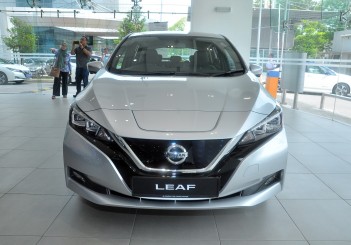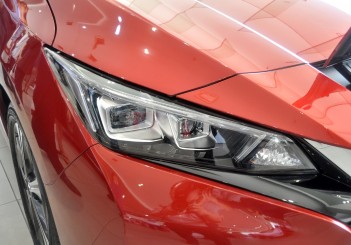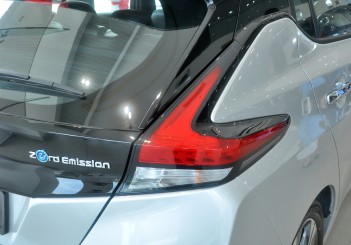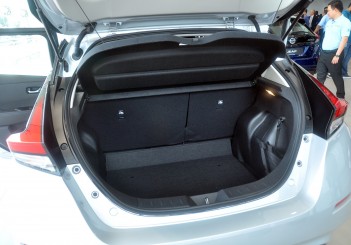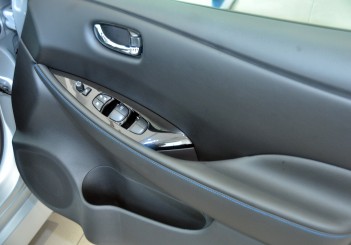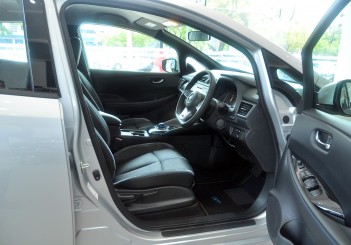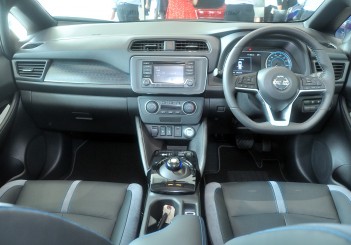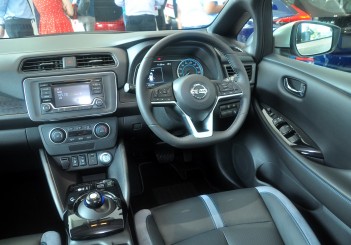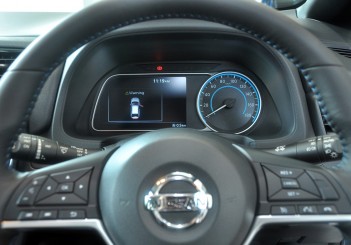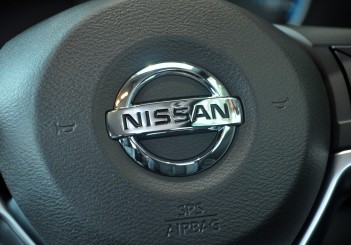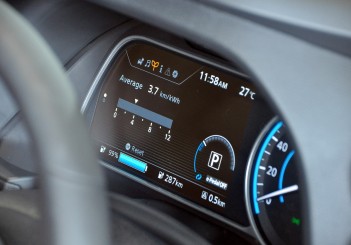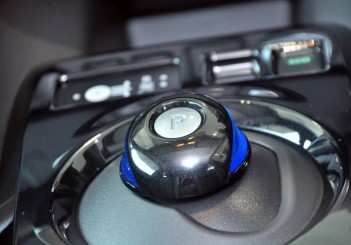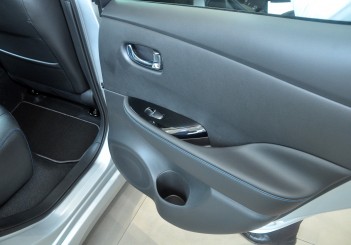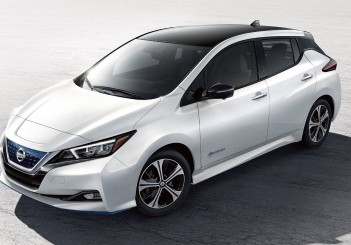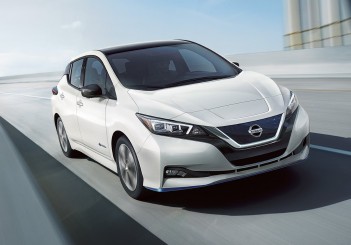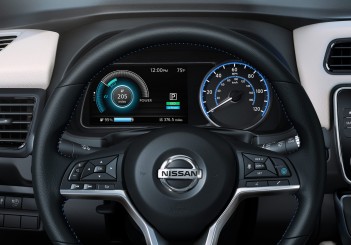Before getting into their respective differences, let's begin with a few similarities.
For starters, both belong to the hatchback segment of vehicles that are fully powered by a lithium-ion battery installed into the floor to power an electric motor and can be charged via a regular household plug or dedicated fast-charger.
Other than that, these two vehicles take different approaches in terms of design, use of materials and ergonomics.
Price, warranty and colour
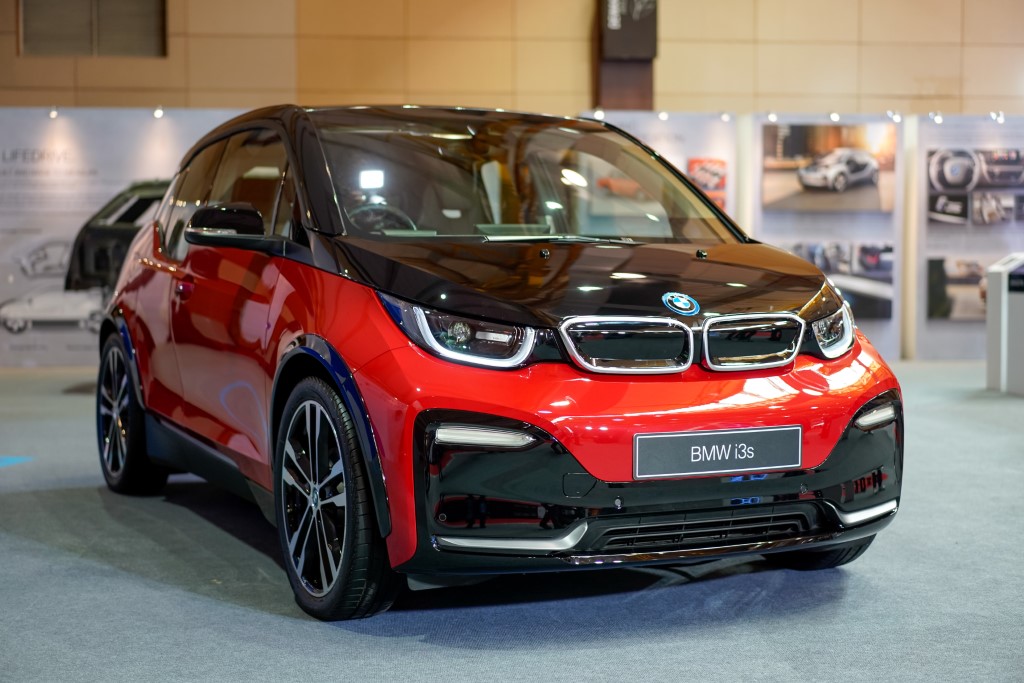
The i3s costs almost RM280,000 (on-the-road without insurance) and that's almost RM90,000 more than the LEAF's RM188,888 asking price.
For peace of mind, the i3s comes with a five-year unlimited mileage warranty which includes free scheduled service, a two-year tyre warranty programme, access to BMW Roadside Assistance and Accident Hotline and the BMW Group Loyalty+ Mobile App – BMW White Card and BMW Service Online.
The battery comes with an eight-year or 100,000km warranty with one out of its eight modules costing RM7,300 - not including RM1,140 for labour.
The i3s is available with a Balloon Financing Plan from BMW Group Financial Services Malaysia and based on an 80% loan over a five-year tenure, it can be had with a monthly instalment of RM3,188.
For colour choices, the i3s can arrive in either Fluid Black or Mineral Grey (metallic), paired with Capparis White and accented by BMW's i Blue highlight.

The LEAF, on the other hand, is covered by a three-year or 100,000km warranty that includes a three-year or 60,000km maintenance service as well as an eight-year or 160,000km lithium-ion (Li-ion) battery warranty.
This is accompanied by a three-year Owners' Privilege Programme that allows a LEAF owner the ability to borrow a Nissan X-Trail sport utility vehicle, Serena multipurpose vehicle or a Navara pickup truck for a period of 23 days within a year.
Size and practicality
Size-wise the i3s with its coach doors is the smaller of the two while having a wheelbase of 2,570mm and measuring in at 3,999mm-long, 1,775mm-wide and 1,578mm-tall.


The larger LEAF has a wheelbase that's 120mm longer at 2,690mm and measures in at 4,480mm (+481mm), 1,790mm-wide (+15mm) and 1,540mm-tall (-38mm).
For luggage space, the i3s has a 260-litre boot (expandable to 1,100 litres) which is dwarfed by the LEAF's 435-litre boot (expandable to 1,176 litres).
Battery and range
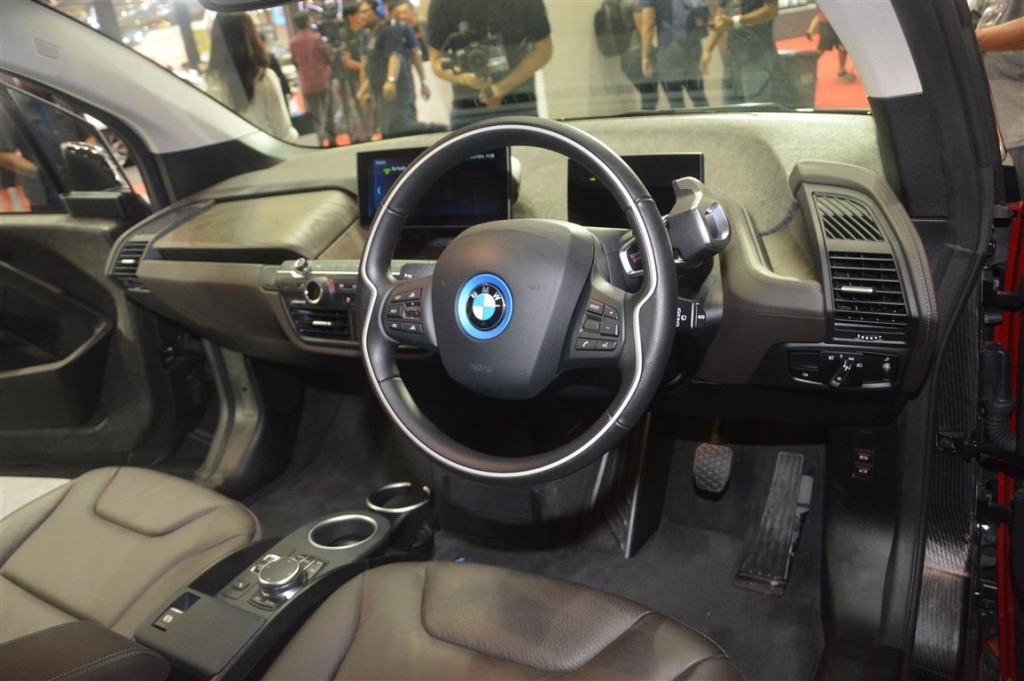
Because the i3s is more compact, it has a lower kerb weight at around 1,300kg thanks to the use of aluminium at the base of its platform and carbon fibre for the passenger cell.
Despite its size, it uses a slightly larger 42.2kWh (120Ah) Li-ion battery that's capable of realistically travelling up to 260km.
Costing RM8,897, the BMW i Wallbox facilitates speed charging at home with 11kW of charging power for an electric range of 180km in under three hours.
The i Wallbox is equipped with WiFi access and can be operated via a smartphone, smartwatch, PC or tablet, and can also access all features of the BMW Digital Charging Service.
When charging in public, the i3s gets access to the local ChargEV network which is part of the BMW 360-degree Electric programme and depending on location, the network provides for outputs of 3.7kW, 7.0kW and 22kW.

As for the LEAF's battery, which is slightly smaller at 40kWh, the Japanese automaker claims that it can achieve up to 311km on a full charge.
Via a usual A/C 6.6kW wall-plug, fully charging the LEAF's battery will take about seven hours or roughly one hour with a quick D/C 50kW CHAdeMo Charging facility.
Currently, CHAdeMO quick chargers are available free-of-charge at ABB Malaysia in Subang Jaya, Nichicon Sdn Bhd in Bandar Baru Bangi and PLUS Ayer Keroh R&R (Malacca - Southbound) as well as one of Edaran Tan Chong Motor's (ETCM's) 17 locations nationwide.
There are plans to have chargers available at more ETCM locations in the future.
Power and performance

For power, the electric motor of the i3s provides 181hp and 270Nm of torque which allows it to sprint from 0 to 100kph in 6.9 seconds and with a drag coefficient of 0.32Cd, top speed is at 160kph.
The LEAF's electric motor provides 148hp and 320Nm of torque, but due to its 300kg of excess weight, 0 to 100kph times are dispatched in 7.9 seconds while boasting of a sleeker 0.28Cd and an electronically-limited 155kph top speed.
In terms of operating modes, the i3s has four driving modes of Comfort (default), Eco Pro, Eco Pro+ and Sport and is capable of providing between 130 to 160km in everyday driving conditions, even less if it is in Sport mode.
Switching to Eco Pro mode increases the driving range by around 12% (145 to 179km) by desensitising the throttle pedal so that less electrical power is unnecessarily used.
Taking efficiency a step further is Eco Pro+ mode which increases range by 24% from Comfort mode (160 to 198km) by putting the car into maximum efficiency. This limits its maximum speed to 90kph and its climate controls enter energy-saving mode.

The LEAF has five driving modes of e-Pedal, D Mode, B Mode, ECO Mode and B-ECO Mode.
In e-Pedal mode, the accelerator pedal is capable of taking on braking duties and is touted to be particularly convenient in stop-go traffic.
While D Mode indicates normal driving mode, B Mode puts regenerative braking into its most aggressive setting to help to minimize the use of the braking system.
In Eco Mode, this limits the electric motor's output while slightly increasing regenerative braking to help improve the Leaf's overall range.
Weight, wheels and suspension

For ride and handling, the i3s gets a sportier suspension setup over the standard i3 and comes with custom-made springs, dampers and anti-roll bars.
The front end uses MacPherson struts while the rear employs a more sophisticated multi-link setup.
It's also 10mm lower than the i3 and has a wider 40mm track while rolling on larger 20-inch BMW i lightweight double-spoke (style 431) alloy wheels with 175/55 (front) and 195/50 (rear).
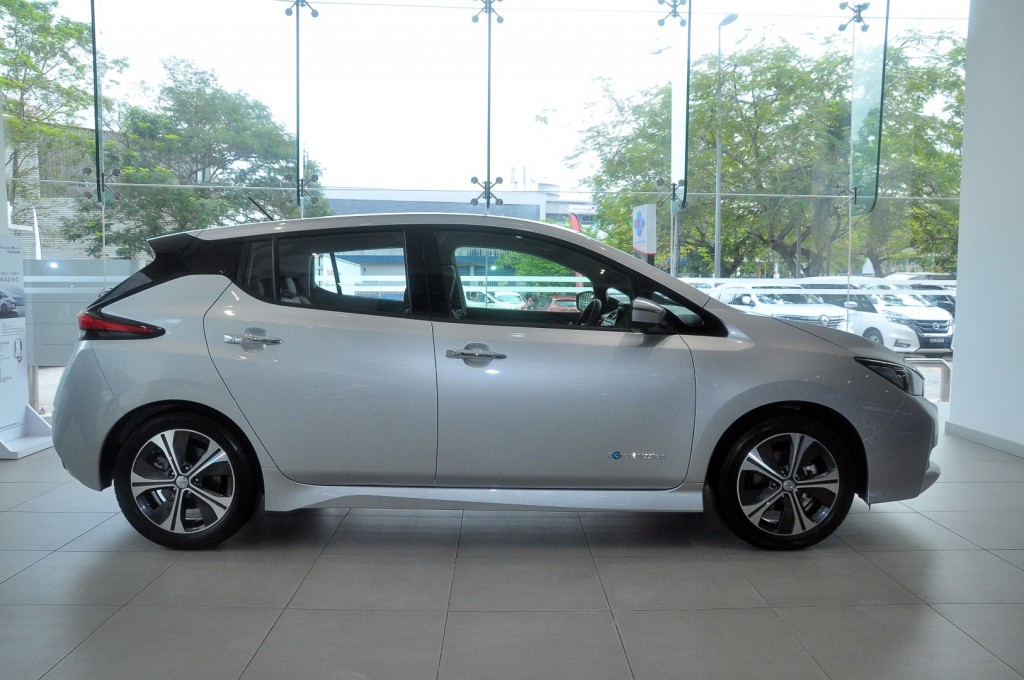
The LEAF uses front independent struts as well but the rear uses a torsion beam suspension setup and sports smaller 17-inch Turbine-design wheels with 215/50 series tyres all-round.
Interior

The i3s' interior features Dark Truffle Vernasca leather upholstery and Carum Spice Grey headliner while (for the sake of sustainability) recycled plastics, natural fibres and unbleached eucalyptus wood accent the cabin.
Two screens have been fitted inside, one of which is a 5.7-inch TFT- LCD digital instrument cluster while the second is a larger 10.25-inch screen for the BMW Navigation System Professional infotainment system and iDrive operating system.

The LEAF's cabin sports leather-Alcantara seats, leather-wrapped speed-sensitive multifunction electric power steering wheel, keyless entry with push-start button, power windows with driver one-touch function and automatic climate controls.
Entertainment comes from a four-speaker sound system connected to a 5.0-inch display with radio, USB and AUX ports as well as Bluetooth connectivity.
Safety

For safety, the i3s is further equipped with the Driving Assistant Plus package in addition to its standard safety equipment of six aibags, anti-lock braking system and electronic stability control, among others.
This includes a rear-view camera, Park Distance Control (front and rear), active cruise control with Stop & Go function, Collision and Pedestrian Warning with City Braking function and a Traffic Jam Assistant.
Owners will also have access to BMW ConnectedDrive services including Intelligent Emergency Call, Concierge Services and Remote Services.

In comparison, the LEAF is fitted with six airbags, anti-lock braking system, electronic brakeforce distribution, vehicle dynamic control and hill-start assist.
It also adds on Nissan's Safety Shield technologies which includes forward-collision warning, forward emergency braking, around view monitor with moving object detection, driver alertness ride control and trace control.
BMW i3s
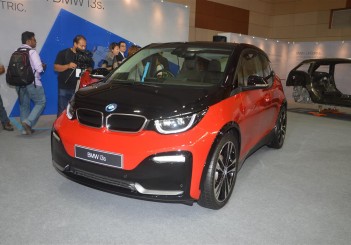








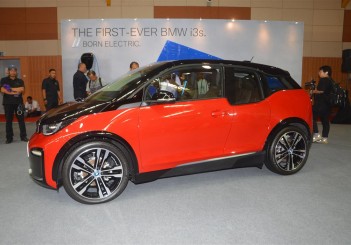
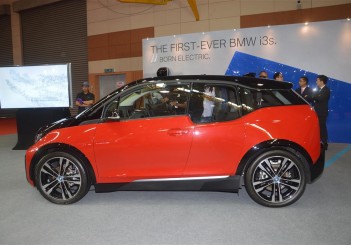



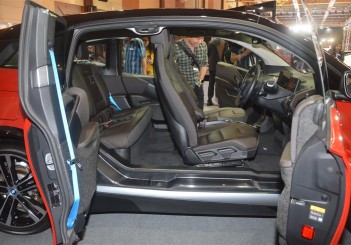






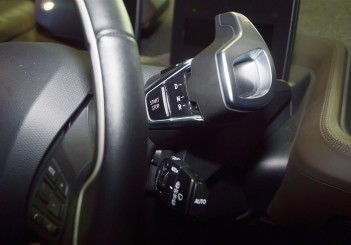





Nissan LEAF



